Search
Read about the life and naval career of Commander Henry Carlton Cumberbatch.
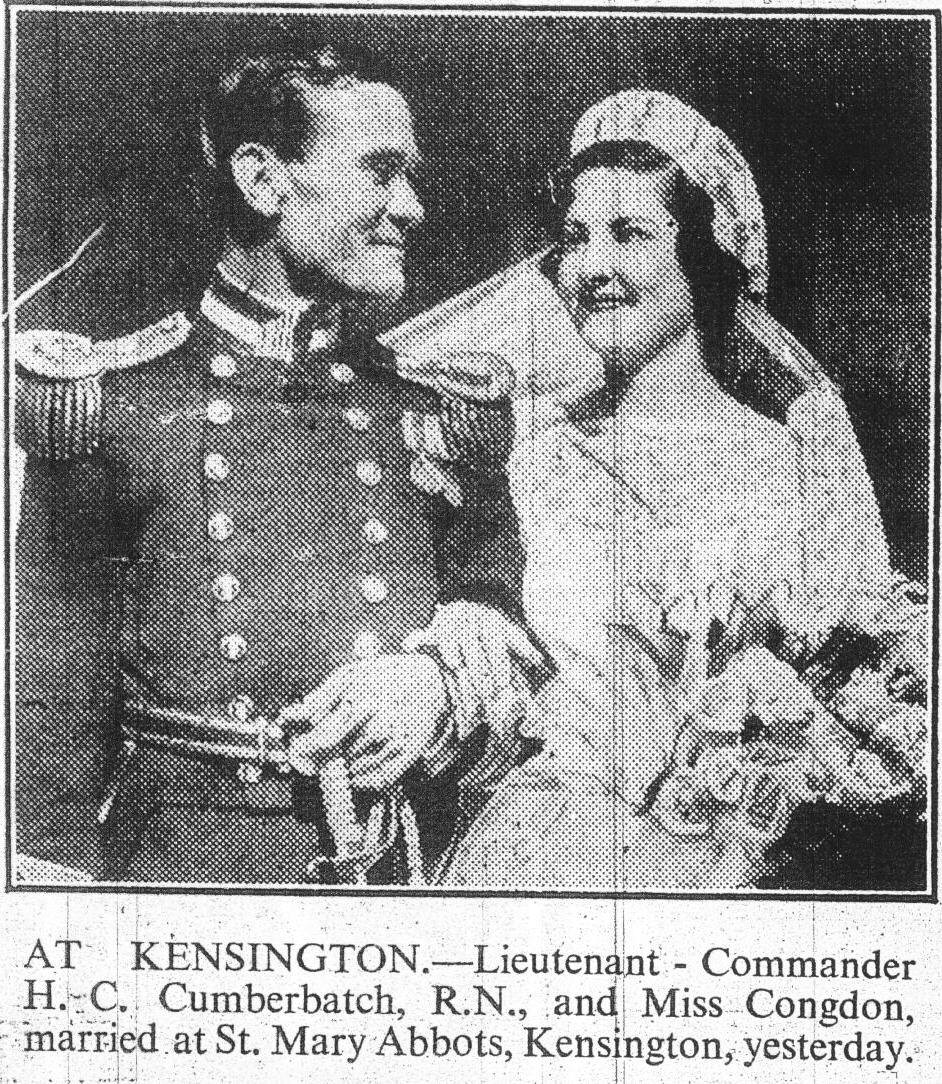
Commander Henry Carlton Cumberbatch
The biography and service career of Henry Carlton Cumberbatch.
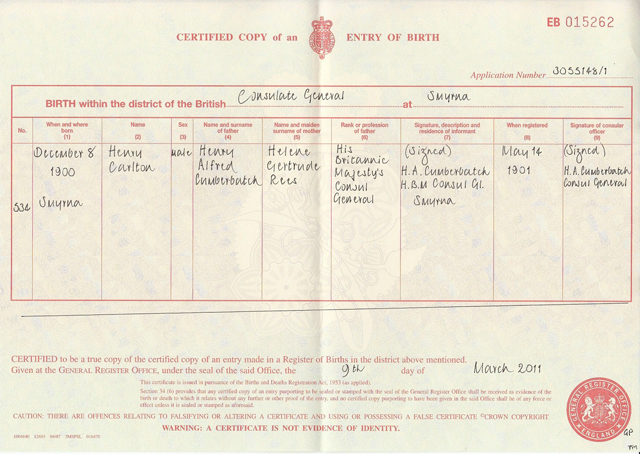
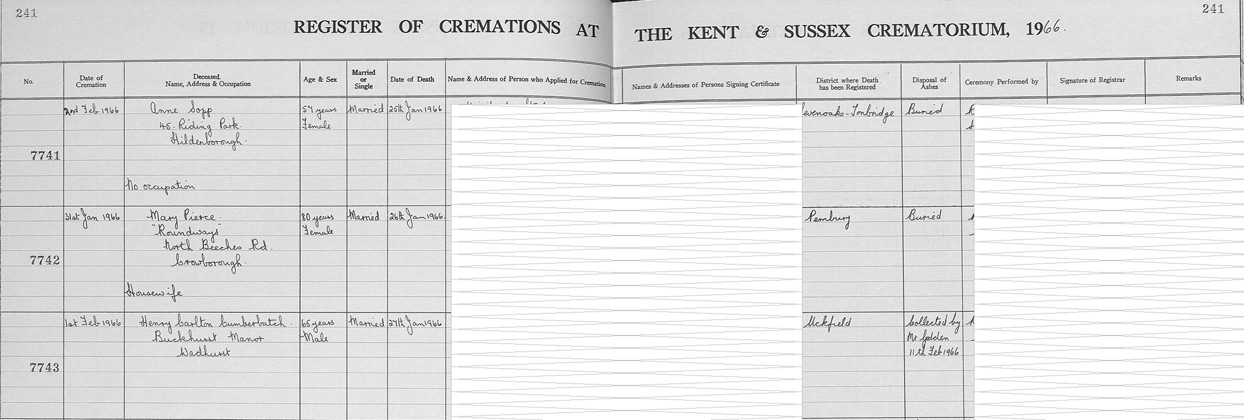


Commander Henry Carlton Cumberbatch’s Medals
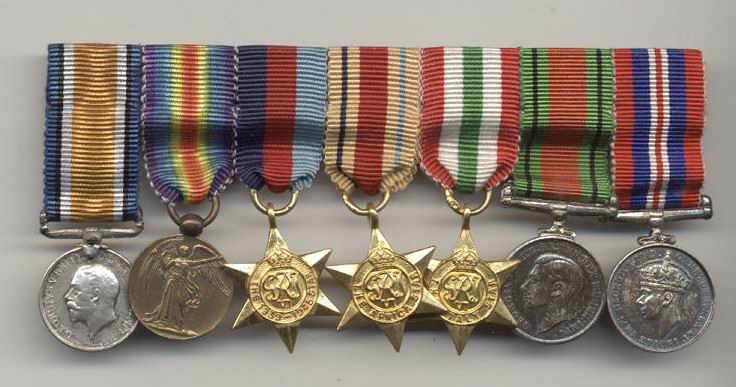
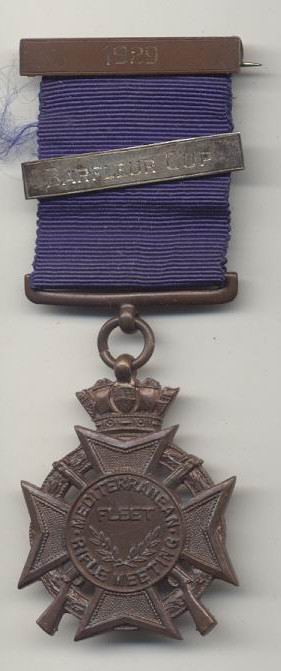
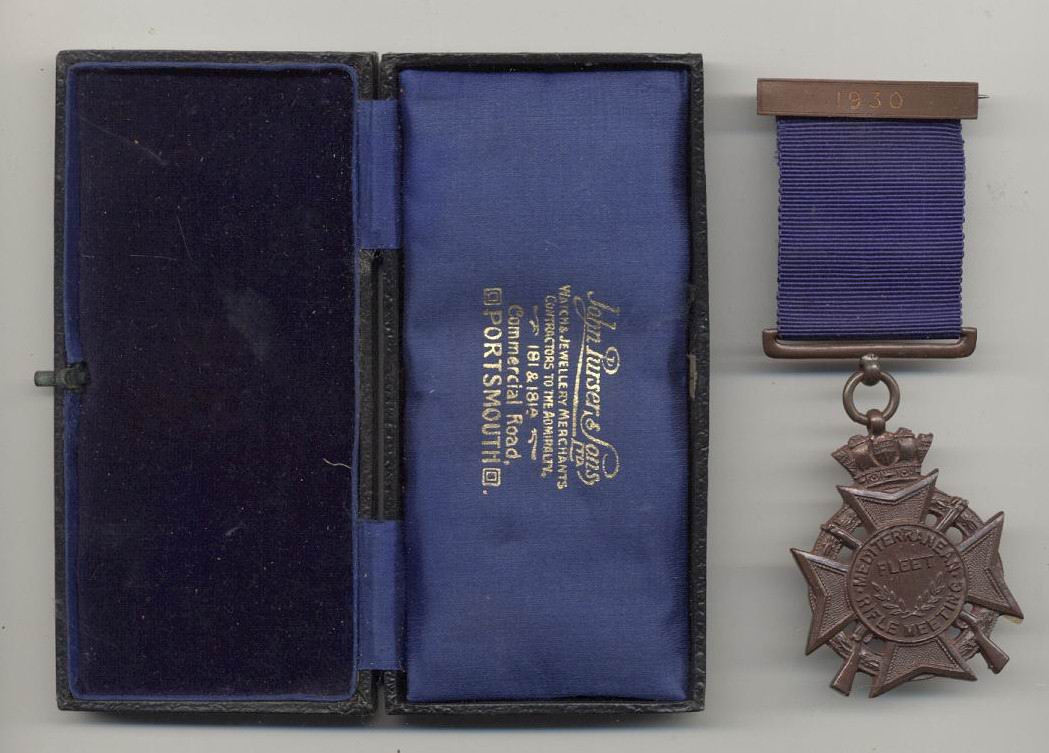
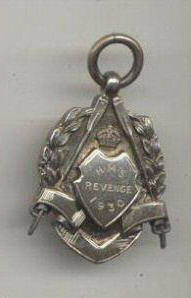


Commander Henry Carlton Cumberbatch Medals Awarded:
- British War Medal
- Victory Medal
- 1939-45 Star
- Africa Star
- Italy Star
- Defence Medal
- 1939-45 War Medal
Also Royal Navy shooting and sports medals, including:
- Mediterranean Fleet Rifle Meeting; Top bar dated 1929 and with silver ‘Barfleur Cup’ bar
- Mediterranean Fleet Rifle Meeting ; Top bar dated 1930 and with silver ‘Barfleur Cup’ bar; with original award case
- Silver rowing medallion awarded by HMS Revenge 1930; Reverse engraved Commd Officers’ Gig, H C Cumberbatch
- Devonport Port Rifle & Revolver Meeting; Reverse engraved ‘Rifle’ with three clasps all indicating events in 1932
- China Fleet Rifle Meeting; Reverse engraved Officers’ Revolver 3rd 1935
Born 8 December 1900 the son of Henry Alfred Cumberbatch, CMG, and Helene Gertrude Cumberbatch nee Rees, at Smyrna [now Izmir], Turkey. His parents were married 16 January 1891 and other children of the family were Robert Cecil Cumberbatch (b 1892 in Smyrna), Ida Sybil Cumberbatch (b 1895), [Sir] Hugh Douglas Cumberbatch (b 1897 in Smyrna), Nancy Maria Cumberbatch (b 1905).
May 1914 Henry Carlton Cumberbatch joined the Royal Navy as a cadet at Osborne 15 August 1917. He passed out from Dartmouth as a midshipman and was appointed to the battle cruiser HMS Repulse. The 27,333-ton HMS Repulse was completed only a year before Henry Carlton Cumberbatch joined her, was with the 1st Battle Cruiser Squadron in the Grand Fleet. She and the Prince of Wales were sunk by Japanese aircraft on 10 December 1941.
November 1917 Repulse is in action with German light cruisers during operations in the Heligoland Bight when she flies the rear-admiral’s flag in the 1st BCS.
3 December 1918 his father Henry Alfred Cumberbatch, who had was born on 27 June 1858 in Berdiansk, Russia, died at Weymouth, England.
22 January 1919 HMS Repulse prepares to undergo a refit so Henry Carlton Cumberbatch was posted to the battleship HMS Marlborough, to be commissioned on 12 March for service in the Mediterranean. At Yalta in April she embarked members of Russian imperial family fleeing the Bolsheviks. The 25,820-ton HMS Marlborough was built at Devonport, where she was launched in October 1912 and completed in June 1914. She was torpedoed at Jutland but survived. Stricken under the Washington Treaty and sold in May 1932.
31 January 1919 he was posted to 3,380-ton depot ship HMS Woolwich, for service in destroyers.
1 June 1919 he was posted to the battleship HMS King George V, flagship in the Mediterranean. The HMS King George V, 23,000 tons, was launched at Portsmouth on 9 October 1911 and completed in November the following year. She was at Jutland in 1916 and was sold in December 1926.
15 May 1920 Appointed acting sub-lieutenant.
29 June 1920 Captain Arthur J Davies, flag captain in HMS King George V, reports that Henry Carlton Cumberbatch is ‘very thorough; good command but rather slow’. June 1920 An appointment to the destroyer HMS Ulster, in reserve, is cancelled. Instead he goes to the 1,687-ton destroyer minelayer HMS Abdiel, which, like the HMS Ulster, is a tender to the destroyer depot ship HMS Hecla at Chatham. HMS Abdiel was the ex-Ithuriel and could carry 70 mines. She had been launched by Cammell Laid on 12 October 1915 and was sold in 1936.
20 July 1920 Henry Carlton Cumberbatch is granted permission to proceed to France, travelling in the HMS Glengorm Castle which sails on 1 September.
22 July 1920 he is posted to the 1,800-ton destroyer leader HMS Montrose. HMS Montrose was built by Hawthorn Leslie and launched on 10 June 1918. In March 1920 she was one of the British warships involved in the evacuation of refugees from Novorossisk in South Russia. Sold in 1946 for breaking up.
1 September 1920 Sails for France, see entry for 20 July above.
30 December 1920 Report by Cdr Lewis Crabbe states that Henry Carlton Cumberbatch is good at games. Is promising but lacks experience.
15 January 1921 Appointed sub-lieutenant.
28 December 1921 Crabbe reports: ‘In all respects fit for promotion to the rank of lieutenant’.
1 January 1922 Crabbe adds: ‘Improved as regards general ability and knowledge in a most satisfactory way during the past 12 months. Efficient TS officer. Good at and keen on games.’
19 April 1922 Attends Naval College course, including time at Cambridge.
26 August 1922 Captain Argentine H Allington reports: ‘Fair French. Very nice lad(!), of quite the right type. Fine manly physique. Plays a strong game of tennis. Well mannered and turned out officer. Very good ability in school.’
12 December 1922 Volunteers for submarine service. Passed medically fit on 30 November.
15 December 1922 Seniority as lieutenant from this date.
1 January 1923 He joined the submarine course at Dolphin at Fort Blockhouse, Gosport.
1 February 1923 Capt Crabbe recommends him for promotion to lieutenant and he is appointed with seniority from 15 December.
13 April 1923 on completion of the course joins HMS M1, working from HMS Conquest. Temporarily in command while in refit, then became its first lieutenant. Achieved only a 3rd Class Certificate at the end of his submarine course. Confidential report states: ‘Poor exam but has personality. Good physique.’ HMS M1 was an unusual vessel, a 1,600-ton [surfaced] submarine equipped with a 12in gun. She also had four 18in bow tubes. Launched by Vickers in 1917, she sank on 12 November 1926 after a collision with S.S. Vidar off Start Point. HMS Conquest was a Caroline class light built at Chatham and completed on 1 June 1915. In reserve 1919-22 and became Captain S/M with the 1st Submarine Flotilla until 1926. Sold in 1930.
5 March 1924 he transfers to HMS H23, working from Dolphin. HMS H23 was built by Vickers and launched on 29 January 1918. The class had a surface displacement of 440 tons. HMS H23 was sold in 1934.
April 1924 Lieut-Cdr Stanley reports: ‘Hardworking, conscientious; little slow at times but improving; v keen; anxious to get on; shown ability as correspondence and (N) officer; plays all games.’
May 1924 Further report by Captain Max Horton states: ‘Has all the necessary characteristics to make a good SM CO [Submarine Commanding Officer].’ Other entries on his confidential sheet are hard to read but he is said to be ‘quiet’ and ‘forceful’ with a ‘pleasant and equable disposition’. Again, he ‘plays games well; g messmate’. Report signed by Rear Admiral Nicholson as ‘satisfactory’.
9 November 1925 He volunteers to return to submarines after forthcoming period in general service.
21 March 1926 Returns to general service, joining the battleship HMS Marlborough, then with the Atlantic Fleet.
3 January 1927 he re-joined the submarine service with HMS L5 in the 3rd Submarine Flotilla at Devonport. He is also attached temporarily to the 5th Flotilla. HMS L5, which displaced 890 tons on the surface, was launched in 1918 by Swan Hunter. Broken up at Charlestown in 1931.
5 January 1927 Report describes him as ‘conscientiously efficient’. Very good at games, especially rugby. ‘A fine type of officer; an excellent example’. He is described by Capt Plunkett-Ernle-Erle-Drax as being tactful and having a very attractive personality. His physical and social qualities are very good.
22 April 1928 Lieut-Cdr John Leathes reports: ‘A conscientious and zealous officer who has carried out his duties of Executive Officer in able manner; reliable initiative although at times he lacks in foresight. Command is good; shows tact and firmness’
1 May 1928 Began his COQC (Commanding Officer’s Qualifying Course) at HMS Dolphin.
15 August 1928 His mother, Helene Gertrude (nee Rees, born 14 May 1869) dies.
1 September 1928 on completion of the course, he takes command of HMS H28 in the 5th Flotilla, based on the depot ship HMS Alecto at Portsmouth. HMS H28 was launched by Vickers in 1918 and broken up at Troon in 1944. During WW2 the class mostly stayed in home waters on training duties. HMS Alecto was a 935-ton ship, built by Laird in 1911. She was sold in 1949 and broken up at Faslane.
22 April 1929 Henry Carlton Cumberbatch is described as a capable submarine CO of ‘average attacking ability’.
25 August 1929 he is said to have made a ‘v g all-round commanding officer of a S/M’ [submarine].
26 August 1929 Returns to general service in HMS Revenge, which had just completed a refit and was now in the Mediterranean, The battleship HMS Revenge, 27,500 tons, was built by Vickers and launched on 29 May 1915, completing in March 1916. Sold in May 1848.
30 June 1930 Again described as a good messmate and popular.
15 December 1930 Appointed lieutenant-commander.
30 December 1931 Joins the depot ship HMS Lucia, 2nd Submarine Flotilla, being available for submarines. HMS Lucia was a 5,805-ton depot ship, originally the German merchantman Spreewald, captured in September 1914 by Berwick and converted in 1916. She was sold on 4 September 1946 and renamed Sinai. She measured 3672ft x 45ft and carried two 3pdrs.
2 January 1933 Takes command of HMS L21, working from HMS Lucia. HMS L21, 895 tons surfaced, was built by Vickers and launched in 1918. She was sold in 1939 after becoming stranded while in tow. The class was designed for overseas patrol work and minelaying but was used for training in WW2.
Marriage of Henry Carlton Cumberbatch & & Pauline Ellen Laing Congdon
26 April 1934 Henry Carlton Cumberbatch married Pauline Ellen Laing Congdon at St Mary Abbot’s, Kensington. The bride is the daughter of Mr and Mrs T E Congdon, of North Court House, Reading. Best man was Lieutenant E R Collins, RN. The groom’s sister, Nancy, was one of the bridesmaids. Collins was to be appointed lieutenant-commander on 30 May 1934. He was posted on 15 April 1935 as torpedo officer of the cruiser HMS Ajax.

The Times article from Friday 27th April 1934: The marriage took place at St. Mary Abbot’s, Kensington, yesterday afternoon of Lieutenant-Commander Henry Carlton Cumberbatch, R.N., H.M.S. Medway, China, youngest son of the late Mr. H.A. Cumberbatch (Consul-General) and of the late Mrs. Cumberbatch, and Miss Pauline Ellen Laing Congdon, only daughter of Mr. and Mrs. T.E. Congdon, of North Court House, Reading. The Rev. E.C. Symes and Canon Edwin Brook-Jackson conducted the service.
The bride, who was given away by her father, wore a gown of white lace with a scalloped oval train, which fell from below the knees. Her long white tulle veil was held in place by a Tudor headdress pf lace, and she carried a sheaf of white iris and roses and wore a bracelet of white heather. She was attended by five bridesmaids – Miss Nancy Cumberbatch (sister of the bridegroom), Miss Isabel Catto, Miss Jean Murray; Miss Rachel Henderson, and Miss Audrey Gillespie. They wore dresses of turquoise lace with short veils to match. They carried bouquets of coral-coloured carnations and lilies-if-the-valley. Lieutenant E.R. Collins, R.N., was best man, and, like the bridegroom, wore full-dress uniform.
A reception was held in the Empress Rooms, Royal Palace Hotel, Kensington. Among those present were:-
Mrs. T.E. Congdon, Mr. R.C. Cumberbatch [Robert Cecil his brother], Mr. and Mrs. V.C. Allen, Mr. C.E. Allen, Mr and Mrs. C.W. Allen, Mr. and Mrs. Ferguson, Sir William and Lady McKercher, Sir Alexander and Lady Murray, Miss Murray, the Hon. Maurice Baring, Sir Thomas and Lady Catto, Mr. Jock Catto, Sir Thomas and Lady Neave, the Misses Neave, Mrs. E.R. Townsend, Miss Townsend, Commander and Mrs. Voelcker, Mr. R.V. Yates, Mr. and Mrs. Murdoch, Mrs. A.C. Fuller, Mr and Mrs. Borrett, Mrs. Murdoch, Mrs. A.C. Fuller, Mr. and Mrs. F.K. Brooke, Mr and Mrs. H.A. Gardner, Miss Whitehouse, Mrs. J.E. Stevenson, Mrs. P.W. Morris, Mrs. H.E. Howe, Mrs. Graves Chamney, Mrs. John Rowland, Miss Madeley, Mis Fuller, Mrs. E. Baggallay, Mrs. le Bailly, Mr. le Bailly, Mr. A.H. Abbott, Mr and Mrs. G.H. Keeton, Major and Mrs. battine, Lieutenant-Commander Silcock, Miss Haggie.
Miss Rosemary Balfour, Mr. and Mrs. Somerset Playne, Lieutenant Venebles, Captain and Mrs. McCillough, Mr. W.H.C. Daniel, Miss S. Webb, Miss E. Harding, Mr. and Mrs. John Best, Mr. and Mrs. John Humphrey, Captan and Mrs. Black, Mr. E.P. Burke. Mr. A.L. Carless, Captain and Mrs. Bruce Ramsay, Colonel and Mrs. Chapman, Mr. and Mrs. Davy, Miss Raphael, Lietenant-Commander and Mrs. Higham, Lieutenant-Commander Barry, Mrs. Robertson, Mr and Mrs. W.B. Andrew, Mrs. Adie, the Misses Adie, Mr. and Mrs. G.E. Moore, Miss Moore, Mr. geoffrey T. Smith, Mr. and Mrs. Peter Reid, Mr. and Mrs. J.E. Lawie, Mr. and Mrs. A.R. Nevill, Mr and Mrs. J.P. Ward, Mr. and Mrs. G.N. Kingsley, mrs. E.T. Stuart, Mrs. E.J. Miller, Mrs. C.R. Stanley, Mrs. Doris Jenks, Lieutenant-Commander and Mrs. Bingeman, Mrs. Green, Colonel and Mrs. Hickley, Master Dennis Hickley, Master Michael Barker, Mr. and Mrs. Oliver, Miss P. Farquarson, Mr. and Mrs. C.C.F. Glennie, Mr. and Mrs. H.P. Brown, Miss Brown, Colonel Manders, Mr. and Mrs. Roffey, Mr. R.S. Roffey, Miss Roffey, Mr. and Mrs. C.E. Robinson, Colonel L.A. Grimston, Mrs. Herbert Kingham, Miss Kingham, Mr. and Mrs. T. Cope, Miss Diana Mann, Mr. and Mrs. C. Simkins.
April 1934 he travels to China to join the depot ship HMS Medway, 4th Submarine Flotilla.
5 October 1934 Henry Carlton Cumberbatch took command of the 1,6210-ton submarine HMS Osiris, working from HMS Medway. HMS Osiris, an Odin class patrol submarine, was launched by Vickers Armstrong at Barrow on 19 May 1928. She was sold in September 1946 for breaking up at Durban Medway, 14,650 tons, was launched by Vickers Armstrong at Barrow in 1928 and was sunk by U372 off Alexandria on 30 June 1942.


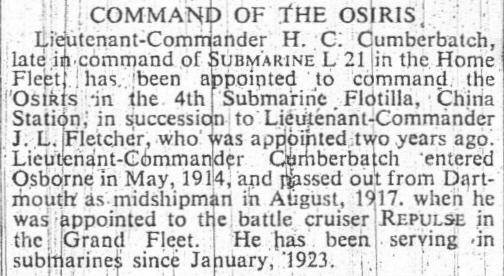
30 August 1937 he assumes command of HMS Otway, based on HMS Dolphin at Gosport. HMS Otway, 1,349 tons, was another Odin class submarine, also built by Vickers Armstrong and launched on 7 October 1926 for the Royal Australian Navy. She was transferred to the RN in 1931 and sold in August 1945 for breaking up.
25 September 1937 he joined Reserve Group A at HMS Dolphin.
July 1938 Moves to the depot ship HMS Dwarf (1936) which had been commissioned as a submarine depot ship on 26 March 1937 with the 5th Submarine Flotilla at Portsmouth.
26 September 1938 he returned to the command of HMS Otway, based on HMS Dolphin. Two weeks later he re-joined Reserve Group A in command. 2 August 1939 he was placed in command of the submarine HMS Oberon, working first from HMS Dolphin and then HMS Forth, 2nd Submarine Flotilla, at Dundee. HMS Oberon, one of the earlier Odin class boats, was launched at Chatham in 1926. Broken up in August 1945 Forth, 8,900 tons, was launched by J Brown on 11 August 1938.
October 1939 Oberon returns to HMS Dolphin.
November 1939 Oberon moves again, working from HMS Alecto at HMS Dolphin.
2 April 1940 Appointed commander and becomes available for command of submarines at HMS Dolphin after leaving HMS Oberon.
June 1940 Posted to HMS Cyclops, 7th Submarine Flotilla. When war broke out in 1939, HMS Cyclops became parent ship of the newly formed 3rd Flotilla at Harwich. Later she was depot ship to the 7th Flotilla at Rothesay on the Firth of Clyde. The flotilla’s duties were mainly concerned with anti-submarine training and the training of new ratings. Here, too, midget submarine and ‘chariot’ crews did their submarine training before joining their respective craft for practical work. HMS Cyclops, 11,300 tons, was the ex-Indrabarah, built by Laing of Sunderland and launched 27 October 1905. She was 477ft (oa) x 55ft and her single-shaft reciprocating engine (3,500ihp) gave her a speed of 13 knots. She carried two 4-in guns and had a complement of 266. She was built as a repair ship but became a submarine depot ship in 1922. Scrapped by Cashmore at Newport, where she arrived in July 1947.
He was promoted to Acting Commander in 1940.
17 March 1942 he took command of the depot ship HMS Wolfe in the US at Saker II. Baltimore, HMS Wolfe was formerly the Montcalm, previously an armed merchant cruiser, converted to a submarine depot ship at Baltimore in May 1942. She ended her commission in January 1943 and was recommissioned the following month.
From March 1943 [after Henry Carlton Cumberbatch had left her] she was with the 3rd Submarine Flotilla on the Clyde, going to the Eastern Fleet after a 1944 refit.
10 February 1943 he returned to general service on leaving HMS Wolfe.
Placed on the retired list as a Lieutenant Commander in December 1945 with the rank of Commander (retired).
1948 Retires.
27 January 1966 he died. Address given as Buckhurst Manor, Wadhurst, Sussex.
See Hans Houterman’s website at: Royal Navy (RN) Officers 1939 – 1945
Naval Career Researched & Contributed by Richard Taylor & Hans Houterman; Presented with their kind permission.
Principal sources:
H C Cumberbatch’s RN Service record
WWI Admiralty Medal Roll (PRO)
Navy Lists
RN Submarine Museum records
Cumberbatch website
Correspondence with Bob Cumberbatch
The Times, 27 April 1934
Ships of the Royal Navy, Vol I, by J J Colledge (David & Charles 1969)
Shore Establishments of the Royal Navy, by Lt-Cdr Ben Warlow (Maritime Books, 2nd edtn 2000)
British Warships 1914-19, by F J Dittmar & J J Colledge (Ian Allan 1972)
British Battleships, by Dr Oscar Parkes (Leo Cooper, 1966 edition)
HM Submarines in Camera, by Cdr J J Tall & Paul Kemp (Sutton 1996)
Jane’s Submarines – War Beneath the Waves, by Robert Hutchinson (Harper Collins 2001)
Royal Naval Submarines 1901-1982, by M P Cocker (Warne 1982)
Submarine Boats, by Richard Compton-Hall (Conway 1983)
Submarines of the World, by David Miller (Salamander 2002)
Cruisers of the Royal and Commonwealth Navies, by Douglas Morris (Maritime Books 1987)
Devonport-built Warships since 1860, by Lt-Cdr K V Burns (1981)
Chatham-built Warships since 1860, by Philip MacDougall (1982)
Warship Names, by Capt T D Manning and Cdr C F Walker (Putnam 1959)
Official History – Naval Operations, Vol V, by Henry Newbolt
At War with the Bolsheviks, by Robert Jackson (First pub Stacey 1972; Tandem edition 1974)



